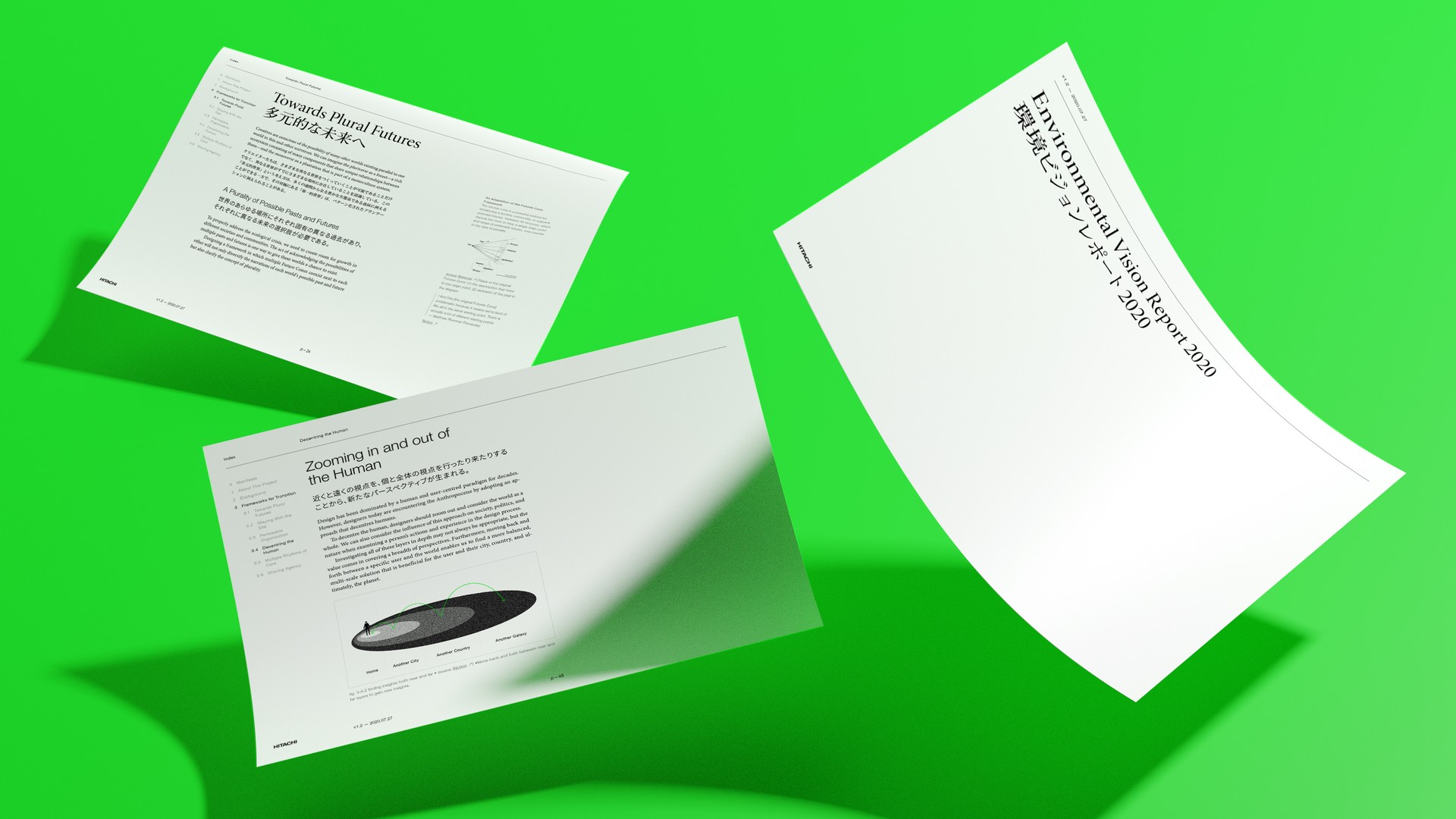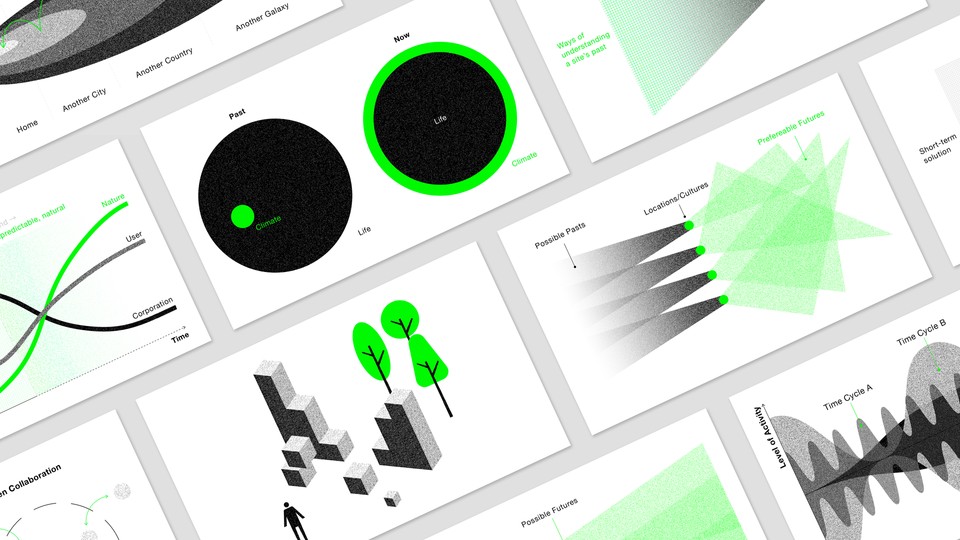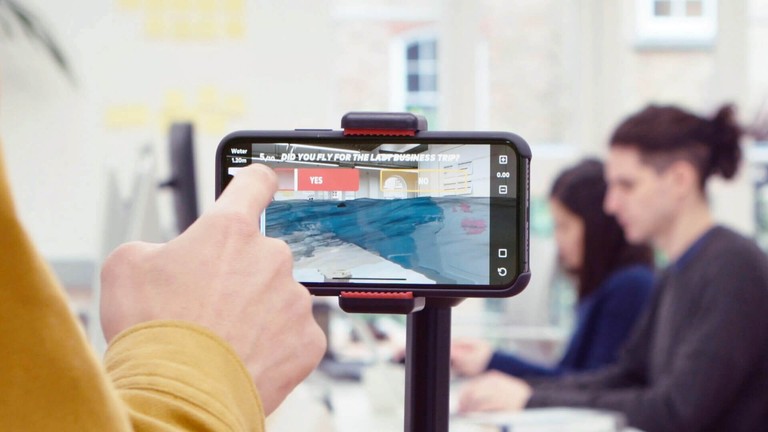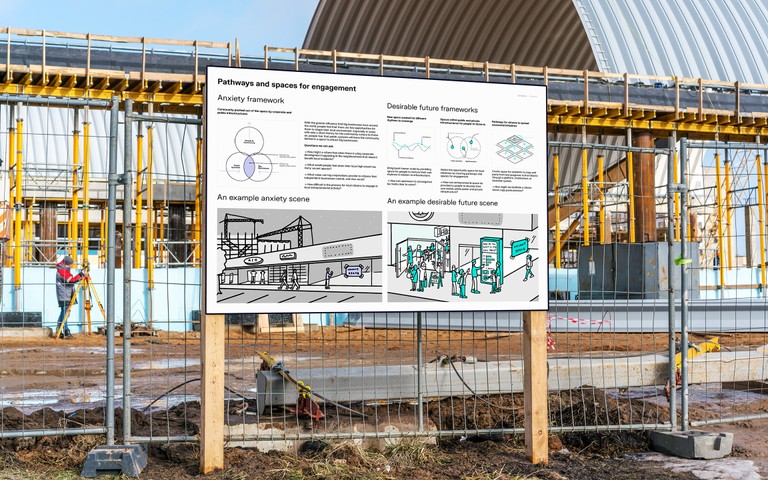
New Ecologies Research
Hitachi, 2020Exploring how new environmental concepts in the age of crisis might inspire the company's creative practices in the future
As a leading infrastructure company, Hitachi wanted to address climate change by repositioning itself as a sustainable global brand. For this mission, we were tasked with envisioning new environmental concepts for the 2020s and exploring how these ideas might inspire the company's creative practices in the future. Working closely with our studios in Tokyo, London, and New York, we examined global trends and surveyed new approaches through interviews with leading creators from various disciplines to deliver the 2020 Hitachi Environmental Vision Report.
Frameworks for Transition
Our research gave birth to "frameworks for transition" ��– a compilation of guidelines inspired by creative leaders that have been applying sustainability-minded approaches to their projects in the Anthropocene. Below is a selection of the dozens of frameworks featured in our research report.
Climate everyday
We have reached the point where the climate issue has taken centre stage in our lives. It is becoming the zeitgeist of our time – an ever-present cloud shadowing our actions and conversations. Many creatives feel an urgent need to engage with this topic and believe that the role of the environment in their work must reflect its growing significance in society.
Breaking down the barrier between human and nature
In many places around the world, the dominant paradigm for centuries (especially in the 19th and 20th centuries) was the separation of humans and nature. Creatives are now recognising this as a social construct. This realisation is inspiring creatives to search for possibilities on the other side of the invisible barrier. The response, however, varied from culture to culture in our research. Many creatives in the western context opposed the early Western environmental philosophies, while on the other hand, creatives from areas such as Japan and Hong Kong, found inspiration in ancient philosophical thoughts on the relationship between humans and nature.
A plurality of possible pasts and futures
To properly address the ecological crisis, we need to create room for growth in different societies and communities. The act of acknowledging the possibilities of multiple pasts and futures is one way to give these worlds a chance to exist. Designing a framework in which multiple Future Cones coexist next to each other will not only diversify the narrations of each world's possible past and future but clarify the concept of plurality.

Credit
- Client: Vision Design Project, R&D Group, Hitachi, Ltd.
- Direction: Yosuke Ushigome (Takram)
- Research: Yosuke Ushigome (Takram), Jonathan Skjøtt (Takram), Fiona Lin (Takram), Motosuke Fukuda (Takram), Yuto Miyamoto, Deborah Ten
- Illustration: Fiona Lin (Takram)
- Graphic Design: Ray Masaki (Takram)

